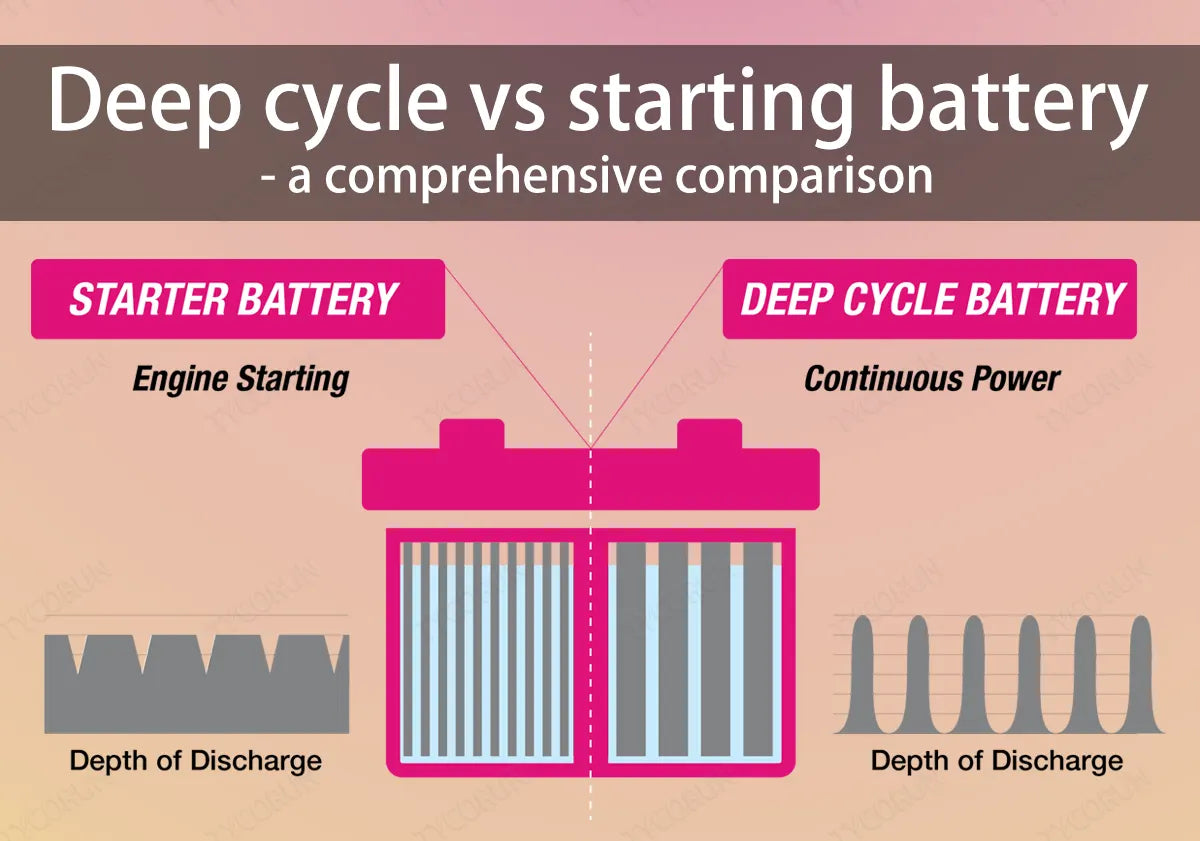
If you are a car owner or have been in prolonged possession of one, you probably already have an idea of the various types of batteries. two of the most used in the car are the starting and deep cycle batteries, and it’s no wonder they often get compared to each other.
Have you ever wondered why the deep cycle battery is often favored for some tasks while the starting battery is prioritized on other occasions? Could it be that these batteries are truly different despite their perceived similarities? And how will both batteries fair when placed head to head against the other?
Luckily, this article will be pitching the deep cycle vs starting battery to compare their similarities and key differences.
Main content:
- What is a deep cycle battery?
- What is a starting battery?
- Deep cycle vs starting battery - Which is better?
- Pros and cons of starting battery
- Can a deep cycle battery be used for starting?
- Different kinds of starting battery
- Differences between lithium-ion starting battery and lead-acid starting battery
- Deep cycle vs starting battery - application scenarios
- Where to buy the best starting battery at the best price?
- FAQs
1. What is a deep cycle battery?
A deep cycle battery is a type of rechargeable battery that is designed for prolonged usage due to its capacity to endure deep discharge. This battery type can be recharged and discharged, enduring a lot of charging cycles. For further information, you can click to check the detailed parameters of 12 volt 100ah deep cycle lithium battery.
The deep cycle battery mostly used to be lead-acid batteries, but newer technologies such as the lithium-ion models are now gaining popularity as more functional and typically longer lasting. Also, although it usually takes the form of automotive batteries, it can differ greatly from regular car batteries.
2. What is a starting battery?
A starting battery, or cranking battery as it is also called, is a rechargeable automotive battery that is designed to start a vehicle by providing a surge of high currents over a short period. It generally teams up with the alternator to ignite the engine, so each surge only takes about 3% of the battery power.
No doubt, the innovation of the starting battery has proved immense with lots of outstanding benefits and functions. In addition, when the generator is overloaded, the starting battery can assist the generator to supply power to the electric equipment, when the generator does not generate electricity or the voltage is low, the starting battery can also supply power to the electric equipment.
These actions don’t require the battery to stay active for too long. However, for the short period it will work, it provides maximum power that is enough to serve its purpose.
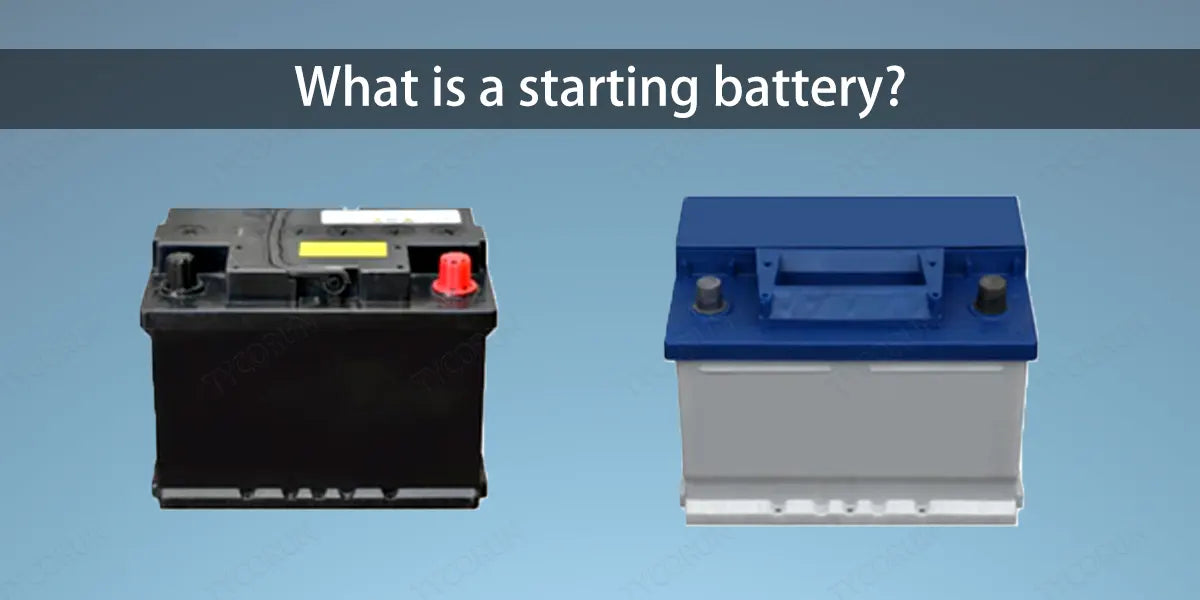
3. Deep cycle vs starting battery - Which is better?
Trying to pick a better battery between the deep cycle and starter battery is always a dilemma for obvious reasons. Firstly, when it comes to the deep cycle vs starting battery comparison, it’s crucial to note that both batteries are important and can serve critical purposes. So, picking the better one can often come down to the application and nature of the task they are required for.
If what you need is an instant surge of electric current to boost or jumpstart a device, then the starting battery is your ideal selection. While, on the other hand, if you want a sustained supply of power for a prolonged period, then you’re better off with a deep-cycle battery.
4. Pros and cons of starting battery
To best understand the chances of the deep cycle vs starting battery, it is best to first observe their advantages and disadvantages. For the starting battery, while it has always proven to be a valuable innovation, there’s no doubt that it also has a few drawbacks.
Here are the pros and cons of a starting battery.
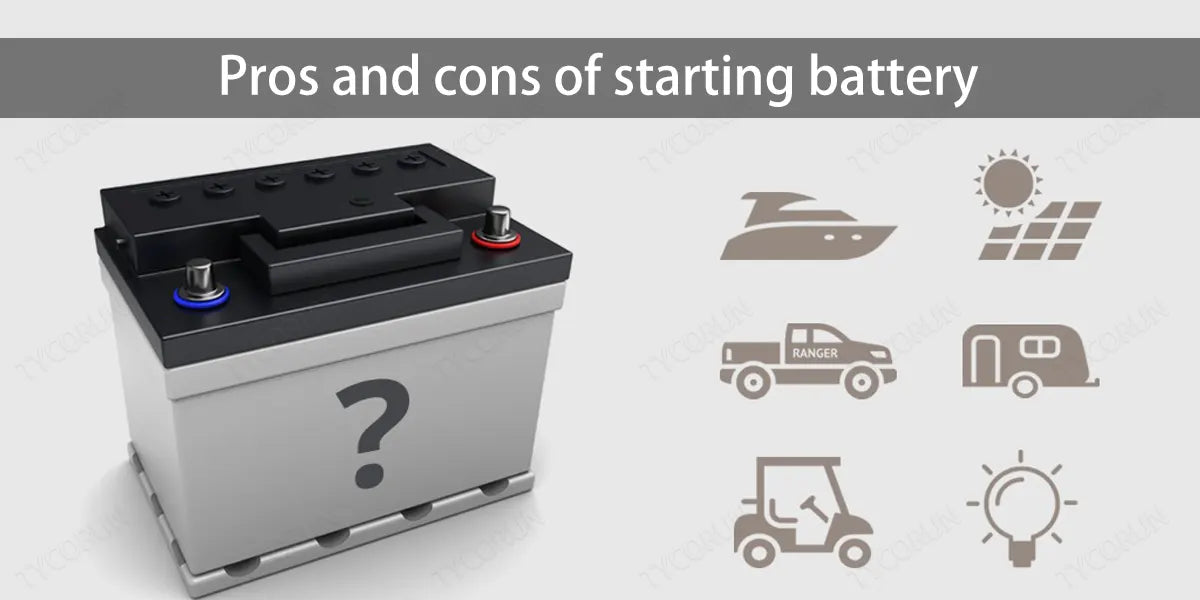
Pros
- It can provide the surge of electric current necessary to ignite electric components.
- It is relatively portable since it can come in different sizes.
- It has a large power-to-weight ratio.
Cons
- It tends to be very sensitive to deep-cycle tasks
- The battery charging process for starter batteries can be agonizingly slow.
- The service life is usually shorter than deep cycle batteries.
5. Can a deep cycle battery be used for starting?
When considering the similarities of deep cycle battery vs cranking battery, it is often easy to assume that both batteries can partially function for the other. But that’s hardly the case, as many car users have come to find out and that’s one if the key points in the deep cycle vs starting battery comparison.
First of all, a deep-cycle battery may be able to function as a starter, depending on the car engine. However, it is highly unadvisable, as deep cycle batteries do not have the high cranking power required for this purpose. As a matter of fact, using a deep cycle battery as a starter will not only compromise the battery strength, and it cannot start the engine.
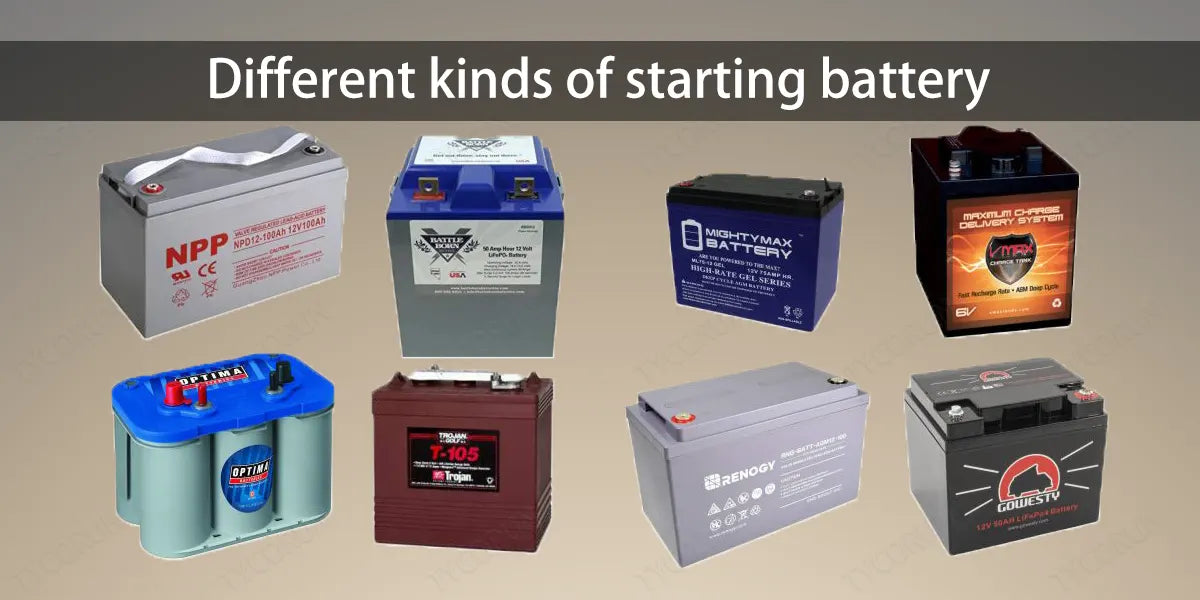
6. Different kinds of starting battery
Starting batteries can come in different shapes, sizes, and volts, but more importantly, they can also come in different kinds. Here are the two primary types of starter batteries.
- Lead-acid battery: The first and most traditional starter battery is the lead-acid battery, and it can be seen in almost every vehicle today. It combines lead-dioxide and metallic lead at the cathode and anode respectively, and it functions mainly as a starter.
- Lithium-ion battery: This battery type is mostly produced as deep cycle batteries. However the lithium jump starter battery is specific for providing cranking power, and it does a good job of it too. Nowadays, more and more cars use lithium-ion batteries as starting batteries.
7. Differences between lithium-ion starting battery and lead-acid starting battery
While the lead acid battery and lithium-ion jump starter can both be used as starter batteries, they still have significant differences between them.
- Firstly, the different materials and formations of the two mean that lithium-ion batteries can last longer than lead-acid batteries. Lead-acid starting batteries have shorter lifespan and need to be replaced in about 1-2 years, while lithium-ion starting batteries can last for more than five years with up to 2,000 cycles.
- Next, when it comes to efficiency, the lithium-ion jump starter battery is superior due to its high power-to-size ratio. Lithium-ion starting batteries have higher energy density, lithium-ion starting batteries are much smaller and lighter than lead-acid starting batteries of the same capacity, which is conducive to the flexible layout of the vehicle as well as to further reduce the energy consumption of the vehicle.
- Lithium-ion starting batteries are equipped with a BMS battery management system, which can monitor the battery status in real time and charge it intelligently, so that the user can start the car at any time.
- Lead-acid starting batteries require frequent maintenance, and the acidic electrolyte may corrode the battery head, affecting normal use, while lithium-ion starting batteries do not require additional maintenance.
- Lead-acid starting batteries contain lead and sulfuric acid, which are harmful to the environment, while lithium-ion starting batteries do not contain harmful components and are friendly to the environment.
- However, the fact that the lead-acid battery is many much cheaper makes it the go-to option for car owners.
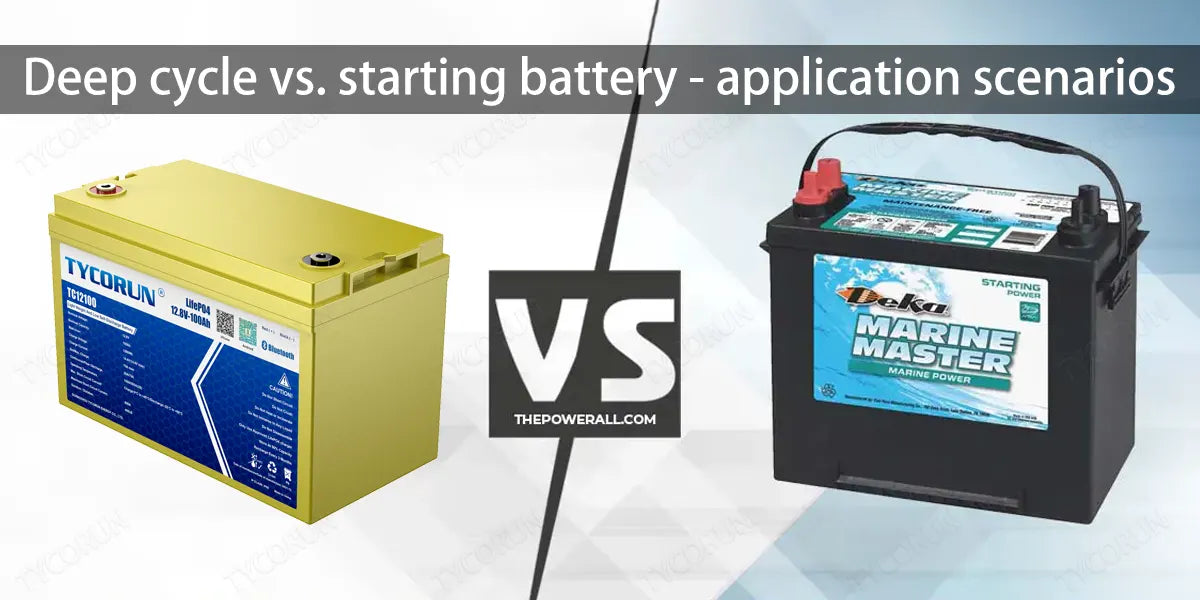
8. Deep cycle vs starting battery - application scenarios
Ideally, the difference in functionality for deep cycle vs starting battery can often be substantial especially when it comes to their application scenarios.
Starter or cranking batteries are designed to generate high cranking power for starting engines, so their applications are pretty straightforward. They include bikes, cars, trucks, and other vehicles with engines that require high crank voltage to start.
Deep cycle batteries, on the other hand, are designed for sustained power supply, so they are mainly suitable for applications that require power supply over extended periods. Example of these application includes recreational vehicles, boats, electric vehicles, golf carts, and e-bikes and home solar power system.
9. Where to buy the best starting battery at the best price?
Starting batteries may be very popular and can be easily purchased in auto stores around town. However, their availability means there are a lot of substandard products out there, and finding the best starter battery might become slightly more difficult.
If you want to buy the best starting battery at the best price, the TYCORUN is the best option with our most professional lithium battery pack technology and 16-year experience specializing in LFP battery and best 3000 watt inverter and 2000w pure sine wave inverter.
10. FAQs
① Is a cranking battery the same as a starting battery?
Yes, a starting battery is the same as a cranking battery, and it is designed to produce a high power surge for starting automotive engines.
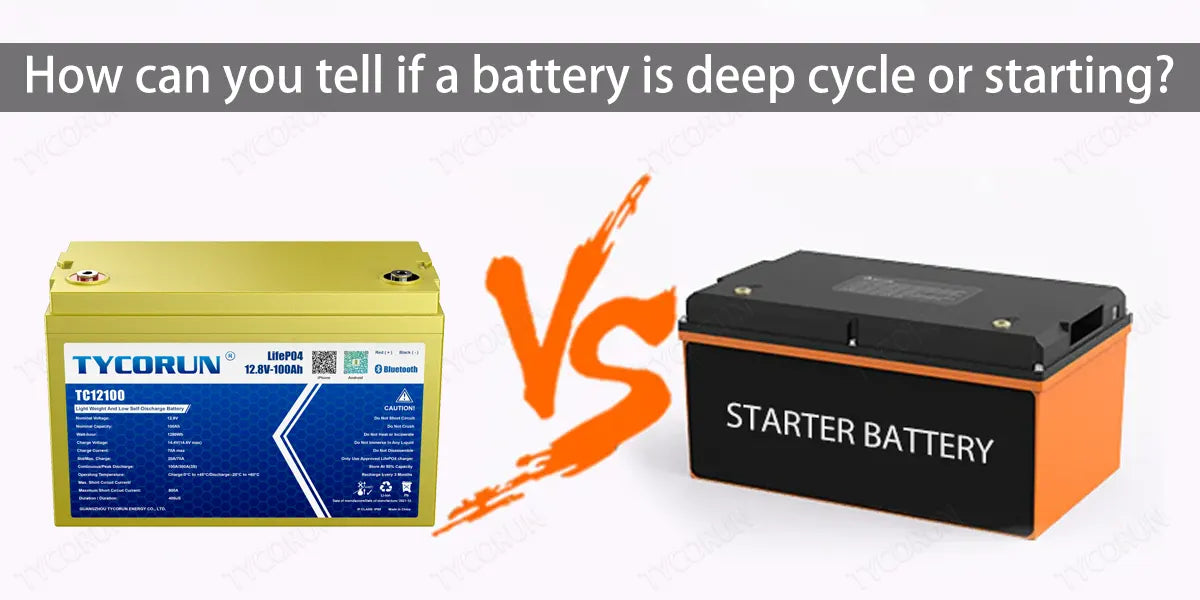
② How can you tell if a battery is deep cycle or starting?
A start battery vs deep cycle battery can sometimes look very similar, but you can still tell them apart easily. For one, the delivery rate of deep cycle batteries is rated in amp/h, while that of starting batteries is rated in cold cranking amps.
③ Can I run a deep cycle and a starting battery in parallel?
No. The fact that the charge and discharge characteristics for deep cycle vs starting battery are different makes it a bad idea to attempt running them in parallel.
Related posts: deep cycle battery near me, power wheels battery, battery stores near me